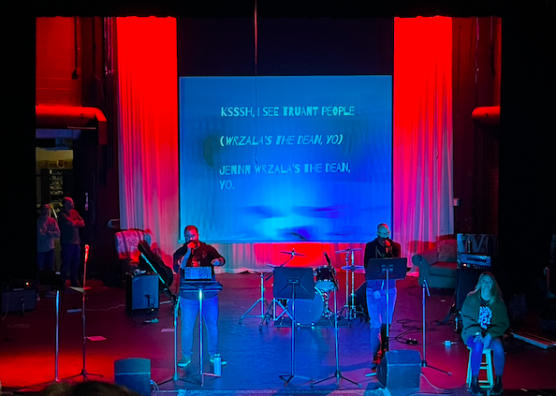“Time Traveler” telescope launches with the promise of breaking a milestone
February 1, 2022
After 31 years under the reign of the Hubble Space Telescope (JWST), the face of space exploration embarks on a new frontier, as the massive $10 billion James Webb Space Telescope was recently launched on December 25, 2021. Equipped with a gigantic 21-feet mirror, this titan of a telescope will probe the cosmos to unearth the universe’s history from the Big Bang to alien planets and more, surpassing peoples’ expectations. Like the Hubble, its predecessor, the JWST will report back to mission control with vivid images of what it examines.
Weighing at around seven tons, the James Webb Space Telescope is the successor to the Hubble Telescope, with many improvements in virtually every aspect. Along with a much bigger mirror than the Hubble that enables it to peer further back in time, the JWST also travels much deeper into space . To clarify, we can see back in time every time we look out at space because of how light travels. On Earth, we know that light travels 186,000 miles per second. But in space, there is a noticeable difference in the speed of light as planets, and other objects are immense distances away from each other. So to put it into perspective, when we gaze up at the Moon which is 239,000 miles away from Earth, light takes approximately 1.3 seconds to travel to Earth, ultimately resulting in us seeing the Moon as it was 1.3 seconds earlier. In addition, while Hubble is rotating around in the orbit of Earth, the JWST will be 930,000 miles away from Earth, according to the live feed of the telescope traveling to its location provided by NASA, allowing it to be closer to the points of interest.
Currently, the JWST is slated to reach its destination, L2, on January 24. L2, otherwise known as Lagrange point 2, is a point in space opposite the sun. JWST’s final destination is L2 because this point is an ideal location for an infrared system. Infrared observations are vital to astronomy because stars and planets are forming, which often lies hidden behind dust masses that can absorb visible light. And by utilizing infrared light emitted by these masses, the telescope can reveal what’s inside.
According to NASA, the JWST has three main goals: look at the assemblies of early galaxies in our universe, the birth of stars, and alien planets, along with the origins of life.
The JWST will observe early galaxies because doing so gives us hints about how the universe evolved, and moreover, JWST’s infrared “eyes”, will look at heat sources, such as the dust masses that can hide stars that were recently born. Additionally, with the wide variety of exoplanets we have uncovered over the past decade or so, the JWST’s robust sensors will be able to inspect these exoplanets in more depth and, in some cases, even document their respective atmospheres. Of course, everything in the universe is finite, just like our home planet, so hunting for habitable planets is everlasting.
Overall, the JWST seems to be a promising new project that, for the next 10-15 years, will roam the universe in search of the answers to humanity’s questions. It also marks the beginning of a new era, as within its lifetime of 10 or more years, several other life-changing events such as Elon Musk’s pledge to make a thriving Mars colony will also probably happen. However, unforeseen debris like asteroids could hit the telescope and cause the expensive operation to fail.
But Gregory L. Robinson, Webb’s program director at NASA headquarters, said that “though Webb will have to execute the most intricate and ambitious process ever attempted in space, the astonishing images it will provide will be more than worth it”.


